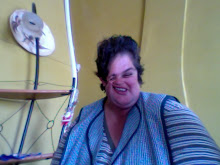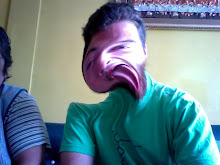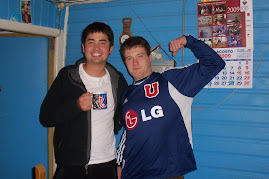
Big Smiles, and Even Bigger Hearts
Pisco Sin Fronteras- Pisco, Peru

After my interesting adventure with the floods and mud slides in Machu Pichu, I was on my way to Piso Peru to do some disaster relief of my own. In August of 2007, the Peruvian coastal town by the name of Pisco, was hit by a massive earthquake that completely changed the lives of every Pisco resident within a matter of minutes. Seeing the conditions in which these people live as they struggle to rebuild their lives was as hard as anything I have seen in my life, but to hear about how their own government turned their backs on them was like a dagger to the heart.
There is a law,that says that if an earthquake measures above an 8.0 on the Richter scale, the government is required by law to provide assistance. After the earthquake hit in Pisco, the US government measured it at an 8.7 or higher. Sure enough, the Peruvian government claimed that it was only a 7.9, therefore removing themselves from the obligatory assistance. I can’t imagine being stabbed in the back by your own government. To this day, there has been little to no assistance from the government, but an organization started by a local man, and run by volunteers from all over the world, has drastically changed the lives of thousands of people in Pisco.

(Childrens play space behind home)
Pisco Sin Fronteras was an organization that was started one year after the earthquake in an effort to give the people of Pisco what they deserve. The earthquake devastated the city, destroying 80% of the homes and killing around 600 people. Pisco Sin Fronteras gives assistance to the people who most need it by helping build houses, schools, sanitation units and helping with other community-based projects.


(Normal home in Pisco)

(Nothing beats a game of Peek-a-boo)

Pisco Peru was a severely poverty stricken city before the earthquake hit, so you can imagine what it is like now. The majority of the people are living in shantytowns that popped up after the quake, where people are living with less than the necessities of life. Nearly 3 years later, there are still some people living in tents, but the majority have moved up a step (a small step) to small shacks made of four bamboo poles (one for each corner), a mesh/bamboo type wall (see photos), a tarp for a roof, and dirt or sand floors. On a daily basis as I was working, I saw families that have lived on a dirt floor their entire life, homes made out of plastic and wire, and young children that were sick but couldn’t afford medication. I saw mothers who were slaving over cooking dinner while breastfeeding a newborn baby all the while fighting off the dust that is flying into her eyes and the pot of white rice which is all she can afford to cook. It was normal to see 6-7 children all sleeping in the same bed. Nearly every household didn’t have a bathroom, but rather a 5-gallon pale in a dusty corner without any privacy whatsoever. As I walked down the streets, I would read signs indicating that families could have access to the neighborhood spicket for water only once a week. Children would be playing in the street with a piece of plastic that they had pulled out of the garbage on the side of the road because they couldn’t afford proper toys. But with that being said, I haven’t seen so many bright smiles in my entire time here in South America.

It was refreshing, and a good reminder, to see how happy these people can stay with such little material wealth. Although they have so “little”, they truly have “more” than I have ever seen before. They seemed to have a great outlook on life that I think we could all benefit from. Spending 2 weeks in Pisco Peru, was a good reminder to me of what is truly important in life.


The next day I returned for lunch and to say goodbye, and I could tell that they put everything they could into this lunch. When they brought me my plate, I saw a dish that I have seen thousands of times in my life; spaghetti noodles with good ole tomato sauce. But with all the love put into it, that was the best spaghetti I have ever had. Although they didn’t have much, they were willing to give everything to show a little hospitality. I was quite special.

After lending a hand in some earthquake relief, I was off to Chile where I was soon to experience a little quaking of the earth myself.
Catastrophe #2 of 2010
Earthquake Survival 101- Los Alamos, Chile

Just as I was recovering from my first natural disaster of 2010 with the floods and mud slides in Machu Pichu, I soon experienced my second in less than two months! After 57 hours and 3 nights on a bus, I had finally arrived at my home in southern Chile. It was 9:30 PM on February 26th, and I was happy to be out of my bus seat, and enjoying some fresh home made bread straight from Iris’ oven. I spent the next few hours showing photos and sharing stories from my travels in Peru, and listening to stories from the family’s summer vacation. At about 1:30 AM, we all felt that it was time for bed, and that we could continue sharing stories in the morning. At about 1:40 AM, I was snuggled up in my bed on the second floor of my host family’s home. The rest is history…
3:30 AM I was woken up to the sound of everything in my room shaking and my bed sliding from side to side. The trembling started soft, but quickly got stronger. Within seconds, the house was shaking uncontrollably. I immediately jumped out of bed and ran for the door. I opened my host sisters door and yelled to her; “Bajas bajas altiro!” (“Get down stairs right now!”) I then turned for the stairs. I attempted running down them, but with the stairs swaying 2-3 feet from side to side, I quickly lost my footing and fell all the way to the bottom. With the adrenaline, I don’t think I felt a thing. I was quickly back on my feet running for the front door of the house.

(Initial damage to local grocery store- Porvenir)
3:40 AM Matias, my host brother, and I were in the family truck flying around town stopping at every family members home to make sure everyone was alright. Luckily, everyone was ok, and from what we could tell, there was not a ton of damage to the homes and buildings in town.

(Broken plates in Kitchen)
4:10 AM We had managed to find everyone warm clothes, including me and my host sister who had all our things upstairs, and we were out in the street talking with the neighborhood people trying to figure out what happened and if everyone was safe. Once again, good news; no one had been hurt and no one had much damage to their homes.

(photo taken from CNN.com/damage nearby Concepcion)
8:00 AM The sun was just coming up, and we were finally able to get a better look at the damage. Once again, good news; one wall in the living room had a small crack in it, but other than that, there was nothing we hadn’t seen already with our flashlights.

(photo taken from CNN.com)
10:15 AM We were finally starting to get more nation wide news. The earthquake was officially measured as an 8.8 on the Richter scale, and was said to be the 5th largest earthquake in the history of the world. The epicenter of the earthquake was in a small town by the name of Cobquecura, only about 150 miles from Los Alamos. We were hearing of the horrifying news of the damage in several towns around Los Alamos, especially a large city by the name of Concepcion; I had passed through Concepcion in bus only 6 hours before the earthquake hit. Bridges had collapsed, buildings had crumbled into pieces, thousands were without homes, and hundreds were claimed dead. It was like a nightmare, and I was just hoping I would wake up.
At this moment, I was more worried for my family and friends back in Minnesota, than I was for myself as I was sure they would see the news of the severe damage in the towns near Los Alamos, and would have no idea if I was ok. All telephone service was cut off, and there was absolutely no way to get a hold of them.
Bridget: “Hello?”
Me: “Hey Bridge! Im safe! We are ok here in Los Alamos!”
Bridget: “Oh my goodness. That is gr….”
Phone call was cut off.
1:30 AM Still sitting around the kitchen table with the family, listening to the radio to candle light. We were all putting off the moment we would go to bed. Everyone was scared to death to go back to sleep.

(one families personal stash of goods from supermarket)

(Inside Porvenir Supermarket)

30 minutes later, the owner of the supermarket showed up, entered, and left 15 minutes later with a few things in his hands. He had a small conversation with the police officers, and he left. The police soon came over to the people and said; “Go right ahead! Take what you want!” As the police drove away, the real madness began. I have never seen people so filled with crazyness in my life. People were entering with empty plastic bags, and leaving with the bag over flowing with anything from cooking oil, toothpaste, dish soap, canned goods, and bottles of wine. They were not just taking the necessities, but anything they could get their hands on. I even saw one family even taking the dancing Santa Clause manikin that had been in front of the store around Christmas time. Within 2 hours, the entire supermarket was emptied. I mean empty!

(1 hour later, people still looting)

(People coming with wheel barrels to fill with goods from supermarket)
Monday, February 29th
4:00 AM The entire family was woken up to the sirens, signifying that there had been a fire somewhere in Los Alamos. We looked out the window, and there was a glow in the pitch black sky coming from the direction of the supermarket. We bundled up, and were all walking in the direction of the glow. Sure enough, someone had started the supermarket Porvenir on fire.

11:00 AM We heard rumors that people were looting the second of three supermarkets in town. This time it was the “Frutti Market”. As we walked up to the corner to check out what was going on, it was the same madness as the day before. Accept this time, people were tearing down the side walls to get inside, and breaking in through the roof.
Im not sure what it is, but some people seem to change when there is a catastrophe. I couldn’t tell if they were just using the earthquake as an excuse to rob the super market, or if they were worried that they wouldn’t have the necessities for a long time. Either way, it was like something I have only seen on CNN or in Time Magazine. I know that there are a lot of poor people in Los Alamos, but at one moment, I watched three grown men fighting over a single bottle of shampoo.
Later that day, around 75 to 100 military personnel were sent to Los Alamos to keep things under control. Since that point, we have had no problems with looting.

(taken from CNN.com)
Sunday, March 7th
8:00 AM After 8 days of getting water from a few local wells, and using it sparingly, the community water was back on! Still no electricity.
9:30 PM After 11 days of maneuvering around the house with my head lamp, and eating dinner to candle light, the electricity returned! Ill be honest, it took a little while to get used to have lights again.
HOW TO HELP- If you're interested in donating to the recovery efforts in Chile, there are several online fundraisers already up and running. International charity organization Worldvision has set up a disaster response fund at www.worldvision.org. you can also donate to the American Red Cross' international response fund at www.american.redcross.org.
If your still interested, below is a video I put together from my little Machu Pichu adventure!
















































































































































































Matthew
ReplyDeleteWhat an awesome video . . and your earthquake story was amazing . . you will truly have great stories to tell in your future classroom!
Deb
Oh Matt! Wow!!! You sure know how to bring the action! You ought to be a news reporter!! Enjoyed your writings, pictures and video. Glad you are safe! Keep up the good work!
ReplyDeleteRenell,
NHS Class of 1994-2006 !!! :)